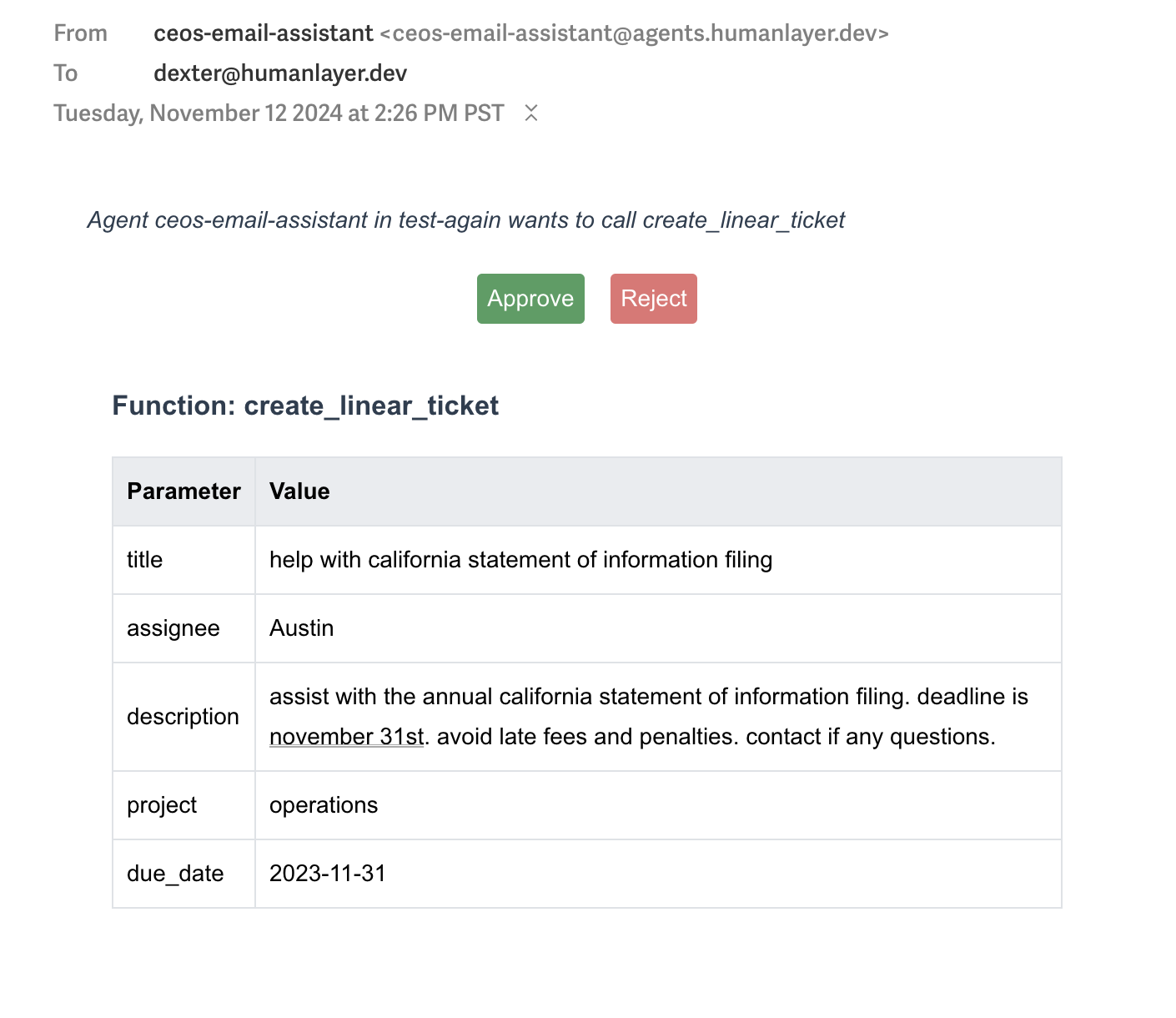Configuration
The Email contact channel allows agents to send emails and collect responses through email threads. Configure an email channel using theEmailContactChannel model:

Email Address
Theaddress field must be a valid email address that will receive the messages.
Context
The optionalcontext_about_user field helps the LLM understand who it’s emailing:
Usage
Use the email channel with eitherrequire_approval or human_as_tool features:
contact_channel to the HumanLayer instance:
HumanLayer instance, you don’t need to pass it to the require_approval or human_as_tool features.
If you pass it to both, the channel in the require_approval or human_as_tool will take precedence.
Custom Email Templates
You can provide custom Jinja2 templates to fully control the email body HTML. The template type is automatically detected based on whether it’s used withrequire_approval or human_as_tool.
Function Call Template Example
For function calls that need approval, your template has access to the function name, arguments, and approval actions:Human Contact Template Example
For human-as-tool contacts, your template has access to the message and response options:Template Variables
Both types of templates receive these variables:event- The full event object (function call or human contact)urls.base_url- The URL for approval/response actionstype- Either “v1beta2.function_call” or “v1beta2.human_contact”
Email Threading
By default, every human contact or function call will trigger a new standalone email thread. However, if you’re building agents that are kicked off by email runs, you likely want the email responses to be collected in a single thread. You can do this by using thein_reply_to_message_id and references_message_id parameters
to the EmailContactChannel, using the inbound email’s Message-ID header as the value.
Below is an example where the inbound email is sent by the same human who will be responding to approval/human_as_tool requests.
EmailContactChannel.in_reply_to() to create a channel that replies to an existing email:

